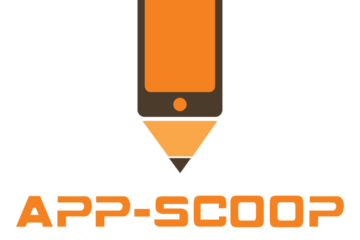 Image Source: https://apcpark.com/
Image Source: https://apcpark.com/
Hence, the earliest directives to prevent the spread of the novel coronavirus was to avoid touching the eyes, nose and mouth after touching an object in a public space and to keep using a hand sanitizer to kill the germs. We mindlessly touch the door knob, the lift button, table surfaces, cars, the toilet and many other things – or else how do you get by during the day. Well, this novel problem requires a novel solution – Touchless Technology.
Touchless Access
We all require a secure access to various buildings. Let’s take a look at the areas that require contact and replace them with touchless technology.
Opening the door physically can be changed to auto doors (a feature that already exists in the market since decades). New York City especially needs to get rid of the rotating door system and replace it with automatic glass sliders.
To using the elevator to go to your desired floor – you would need to touch the lift button. This can be replaced with voice or infrared sensor technology. Lift maker, Fujitec on April 1, launched the ‘elevators of enhanced public hygiene’. This model includes an add-on contactless panel feature that taps infrared sensor technology to detect the person’s destination floor when they hover their hands over the dashboard.
It also comes with basic functions like a congestion indicator that displays how congested the elevator is to consider social distancing and anti-bacterial lift buttons. Voice sensor elevators requires people to announce the floor they wish to go to and the sensor will light up the button on the lift.
Another start-up in San Francisco, Proxy, has devised a technology that allows people to check in at buildings and doctors’ offices. Further, the person can sign on to computers using a Bluetooth signal, all without touching a screen or even taking the phone out of their pocket. Another firm with ongoing field trials is NEC, which in March 2020, at its headquarters in Tokyo, installed security gates that do not require people to remove their masks or sunglasses – and hence, touch their faces.
Another touchless facility to maintain hygiene is obviously the bathroom. The company, Kohler has reported a surge in sales of touchless faucets and toilets to residential customers. The sale of “intelligent toilets,” which are equipped with bidets and toilet seats that open and close automatically, increased eightfold during the first two weeks of March compared with the same period a year earlier. Also, public bathrooms should have automated faucets and soap dispensers, and self-flushing toilets.
Touchless Security Features
Many people have been buying hands-free lock for their homes to avoid spreading germs on door knobs or surfaces. The President of Yale Locks, Mr Williams stated that the sale of touchless Bluetooth enabled locks are up after the novel coronavirus announced itself and is projected to be tripled compared to the 2019 and first half of 2020. These locks will not move the door; the door lever incorporated in the lock can be pushed open with an elbow or a hip.
Reference Source: https://www.theinformation.com/articles/coronavirus-spurs-demand-for-touchless-technology?unlock=96c72f4de715f542
Another security feature such as fingerprint authentication at workplaces, police stations or jail needs to be replaced by touchless technology. People using biometric security are exposing themselves to greater risks during an uncertain time. Facial recognition is a much safer option for organisations worried about the cleanliness of shared fingerprint scanners. This solution can be integrated into any mobile platform, and its step-down technology can even recognize people wearing surgical masks.
Going Touchless in Hospitals
Technological advancements related to testing and patient data collation in real-time basis have helped in early detection and timely procedure assignment. Robots and AI technology have helped to avoid physical contact in extreme cases and taking test samples with reduced error. Educational institutions, schools, colleges are moving online to provide ongoing learning opportunities as physical classrooms shut down. Doctors, specialists, medical practitioners and even retired medical professionals across the spectrum of medicine and human health were willing to serve and use online courses and reviews to enhance learning of symptoms and procedures and create a pooled resource of a strengthened workforce.
Service Industry Goes Touchless
There have been convenience stores in Japan that do not have checkout counters. Further, Japan plans to commercialise the multi-biometric authentication technology which will include age verification systems so that products like alcohol and tobacco can still be sold in such stores.
Similarly, the travel industry will start eliminating walk-in customer services and instead have call centres set up to assist customers online. Online customer services will be enabled to perform all functions through their system or the customer will be able to manage their booking online. All types of payment will be enabled through electronic payment. Further, at airports, Artificial Intelligence will be used to refer to the exposed part of a face against a database of registered images for facial recognition of the passenger.
In the year 2019 due to Japan’s manpower shortage a sensor-based tabletop restaurant menu was designed by Toshiba Tec was developed. This type of touchless technology can be adapted at this time; where menu items, in their actual serving size, are projected directly onto the table, and orders taken via sensors. Further, the cooking process can be shown on the screen while the customers are waiting.
Contactless Payment
Even though liquid cash has been replaced by plastic money, transactions initiated by a tap with a credit card or the wave of a phone often require customers to punch in a pin code or sign a screen or a paper receipt to complete the sale, as a protection against fraud. This needs to change by paying via apps such as WeChat, PayZapp, Alipay, etc. that don’t force patrons to touch a shared surface.
Wrapping It Up
Japan owns about half the global market share in the sensors market, and Covid-19 has given contactless technology and coerced companies to make a leap headlong into advancing solutions for touchless technology. The Motion Sensor Market forecast to grow from USD 1.9 billion in 2016 to USD 2.6 billion by 2023, at a Compound Annual Growth Rate (CAGR) of 6.9% during the forecast period (2019–2025).
The major factors that are expected to be driving the market are rising demand for automation in material handling across industries, growing medical automation for reproducibility and accuracy, emerging e-commerce industry, and enhanced productivity enabled by improved supply chain processes.
Reference Source: https://www.marketsandmarkets.com/Market-Reports/Motion-Sensor-Market-614.html



